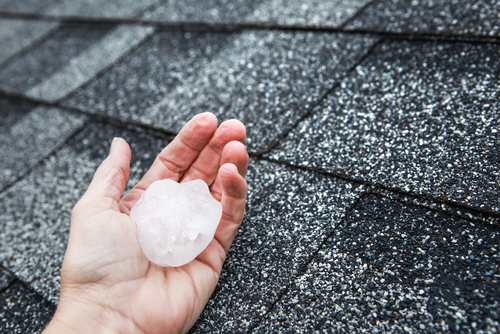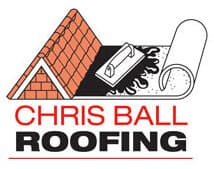 In the UK, it’s rare we experience severe weather phenomena such as tornados and hurricanes. However, the weather we do experience affects your roof in a variety of different ways and it’s important to keep on top of roof maintenance to reduce the likelihood of needing expensive roof repairs on your London property.
In the UK, it’s rare we experience severe weather phenomena such as tornados and hurricanes. However, the weather we do experience affects your roof in a variety of different ways and it’s important to keep on top of roof maintenance to reduce the likelihood of needing expensive roof repairs on your London property.
Our seasonal weather is quite typical in the UK, fresh temperatures and blue skies during the autumn and spring, the warmth of the summer sun and the cold, dark, frosty winters. All of which can have an adverse effect on the health of our roofs. Make sure your seasonal to-do list includes checking over your roof, both inside and out, adding additional checks when the weather has been particularly intense.
How Hot Weather Affects a Roof
While it might seem unlikely that the summer sun is doing that much damage to your roof, much of the effect the sun has on your roof is unnoticed until a period of intense weather – such as an overnight summer storm, which can bring plenty of rain and debris raining down on your roof.
UV Exposure
As many roofs are unshaded, there is no level of protection between your roof and the unfiltered UV rays from our sun. Over time, exposure to heat and UV rays can start to dry out your roof, causing shrinkage as well as causing wood structures to bleach and weaken, potentially even cracking. Tiles that face long exposure to daily high summer temperatures can begin to buckle or split and the joins between tiles can become looser as shrinkage occurs.
Luckily, a well-maintained roof – whether maintained by the homeowner or a professional roof repair company in London – can last many hot summers without too much damage from the elements. This is especially true if your roof is under ten years old and you keep a well-ventilated attic that can help distribute some of the heat felt from the sun.
Older Roofs
If you have a roof older than ten years or an unventilated attic space, known as a ‘Hot Roof’, talk to your local roof repair company about the benefits of a new roof or additional insulation. Advantages of investing in a roof include improved energy bills, better insulation against lost heat and improvement of airflow ventilation around your roof.
Thermal Shock
One of the greatest threats during the summer is the risk of thermal shock on roofs – thermal shock occurs when the temperatures reach higher than average during the day but drop off rapidly after the sun goes down. This extreme change in temperature and moisture in the air can cause the materials on your roof (especially metal) to expand and contract within a short time frame, affecting the structural integrity and on some occasions, leading to warping.
Preventing Growth
If your roof is unmaintained, either through lack of time or buying a property that hasn’t been maintained on a regular basis, your roof might have some moisture trapped between tiles or under within support structures. Over the summer, with the increased warmth and a supply of water, mould and moss can grow rapidly; spreading across your roof in a blanket of green, creeping into your attic spaces and down the external walls. Make sure to treat your roof and regularly remove any green growth to reduce the likelihood of rapid spreading that requires additional effort or cost to remove.
How Cold Weather Affects a Roof
The colder months bring shorter days, less sunlight, frosty, bitter temperatures and an increased chance of rain and snow.
Rainy Days
Rain is the most common weather experienced in the UK, and even more so over the winter months. The constant beating down of water on your roof can begin to take its toll after a few weeks and months of regular rainy weather. Make sure your roof can drain properly, with no water collecting in pools or puddles on flat surfaces, keep guttering clear of leaves and debris to prevent overflowing or blockages. As part of your winter roof maintenance, you should also check that your downpipes are centred over drains with no chance of leaks or spills that could create slippery, icy walkways.
Ample Drainage
By ensuring your roof has efficient drainage, you are reducing the weight of water that would otherwise collect on roof surfaces and preventing the build-up of moisture between tiles that can cause unsightly mould and moss growth. By keeping on top of your roof maintenance before it gets too late into the winter season, you can prevent leaks and moisture ingress through damaged structures to reduce the likelihood of damp, rot and mould in attic spaces. Not only can damp, rot and mould be difficult to get rid of, but, if it’s in a place that isn’t often used or visited in your room (such as unfinished attic), the problem can become an expensive nuisance before you realise it’s occurring.
Snow Flurries
With the wetter weather and temperatures dropping, snow is never far behind. Snow doesn’t ‘drain’ off a roof as easily as water and the build-up of snow can be quite weighty on unmaintained or old roofs. Although many homeowners allow the snow to melt naturally, those who want to clear the snow from their roof should make sure to do so properly, in order to prevent further damage. For instance, some homeowners think using a normal show shovel can be an effective way to ‘knock down’ snow flurries. However, this can cause damage to tiles, knocking them lose or removing them completely. Additionally, some homeowners use rock salt or other ‘melting’ solutions, but these can react negatively with the materials on your roof, requiring yet more expensive repairs.
If you are concerned about the weight of snow build up on your roof, we would advise calling your local professional roof repair company who can advise on the best method of removal for your property.
High Speed, Icy Winds
Bitter, icy winds can also have an adverse effect on your property, especially as we experience the tail end of intense weather from severe weather in international countries. High winds can loosen, move and jostle your tiles, sometimes lifting them up and causing a chain of damage across your rooftop. The best preventative method of protecting your roof against high winds is to regularly check your roof for loose or missing tiles and have these repaired or replaced where necessary.
Weather Roof Maintenance and Safety
Remember, when preparing your roof for intense weather patterns and working at height, you must only do so if you have the confidence to do so and know how to utilise the correct safety equipment. Falls from a roof or from a height can cause life-changing injuries or worse. With that in mind, it is always safer to call a professional when you don’t feel confident in carrying out checks or performing maintenance yourself.
Roof Repairs London
At Chris Ball Roofing, we have been repairing and installing roofs for decades and have the experience to carry out roof repair in London on a variety of roof and property types and structures.
Get in touch with our friendly, knowledgeable team today on 020 8291 3388, email us at admin@chrisballroofing.co.uk or send a message via our contact us page.

Write a Comment